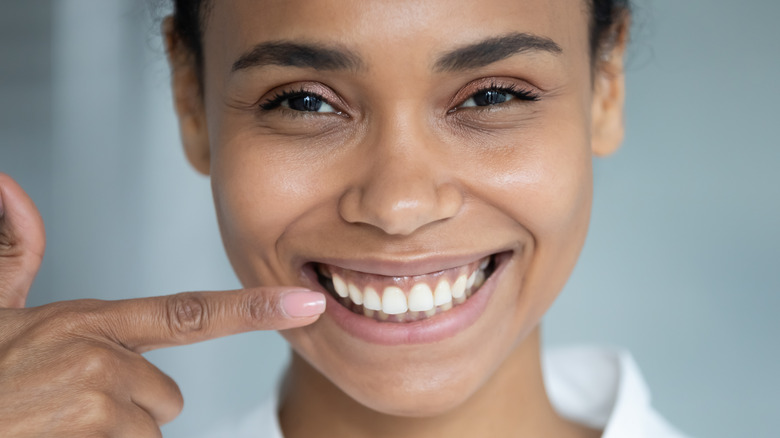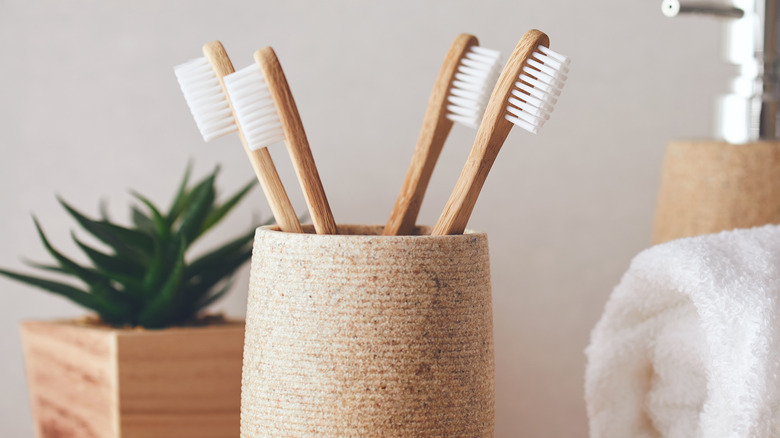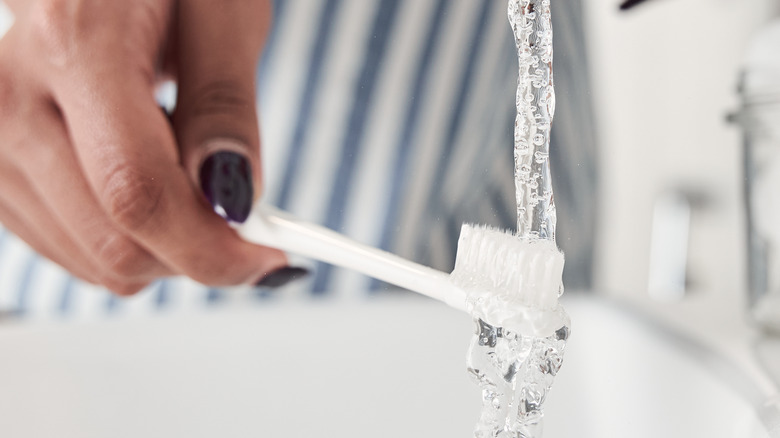How To Sanitize Your Toothbrush And Keep Your Smile Healthy
As an old adage goes, a smile goes a long way. But how far a smile can take you depends a lot on how good your teeth and gums look. Therefore, to have a smile that amps up your overall visuals, you need to take good care of your oral health. Appearance aside, your dental health also plays a big part in determining your longevity, a 2011 study in the Journal of Aging Research points out.
There are numerous ways to keep your set of pearly whites strong and shiny for life. According to the Oral Health Foundation, brushing your teeth twice daily, limiting sugar intake, and having regular dental check-ups can help you stave off dental decay and gum disease. Another routine that's no less important in maintaining your dental hygiene is to sanitize your toothbrush regularly. A toothbrush is where the bacteria and residue from your teeth are transferred after you finish rinsing your mouth. For this reason, your toothbrush needs more than just a cold-water wash to be clean and safe to use again and again. Here's what you can do to keep your toothbrush in tip-top shape.
Your toothbrush is contaminated with germs
According to the National Institutes of Health, our mouth harbors about 700 species of bacteria that dwell on our teeth, tongue, and gums. Some bacteria are harmless, while swathes can spell trouble. For instance, the leftover food particles and saliva in your mouth produce a colorless, sticky film called plaque, which develops on your teeth and under your gums. Plaque, containing acid-producing bacteria that can destroy your tooth enamel, is responsible for oral diseases such as gum disease, tooth decay, cavities, and eventually tooth loss.
For this reason, it's no wonder that bacteria and food debris in your mouth can also form on your bristles, which you use daily to brush germs off your teeth. The high humidity in the bathroom, where toothbrushes are usually stored, also plays into the development of bacterial growth and cross-contamination. Toothbrushes from communal bathrooms, per a 2015 study by researchers at Quinnipiac University, could catch fecal coliform bacteria in the air and carry potentially pathogenic bacteria.
What a revelation, isn't it? Your mouth may feel fresh and clean after a good rinse, but your germ-laden toothbrush doesn't feel the same way.
How to sanitize your toothbrush
There are several ways you can disinfect your toothbrush between uses. According to the Centers for Disease Control and Prevention (CDC), the most basic method of cleansing your toothbrush is to run tap water over it until it's completely clean and let it air-dry. You can also sink the bristles in antibacterial mouthwash for about 30 seconds for a more powerful cleansing.
For better elimination of bacterial accumulation on the bristles after each use, you can also put your toothbrush in a pot of boiling water for two to three minutes, per Modern Dental Hygiene. Once your toothbrush dries, place it in an upright position and a distance from other brushes. Make sure to clean your toothbrush cover and container regularly to keep bacterial growth on the brush to a minimum.
Containing antimicrobial ingredients such as sodium hypochlorite, citric acid, and sodium bicarbonate that help unfasten food debris trapped between the bristles, denture cleansers can also be used to disinfect your toothbrush.
Another popular technology used for blasting germs is UV toothbrush sanitizers, a battery-powered device that employs ultraviolet light to destroy microorganisms. According to a 2008 study in the American Journal of Dentistry, UV light can reduce 86% more bacteria on your toothbrush compared to a quick rinse in tap water. However, keep in mind that toothbrush sanitizers cannot sterilize or eliminate bacteria completely. Therefore, it's unlikely that your toothbrush can ever be truly germ-free.
While it's important to make the most of your toothbrush's life cycle, you should change it every three to four months to avoid compromising the condition of your teeth. Once your bristles get worn, they will no longer be effective in removing plaque buildup from your teeth.


